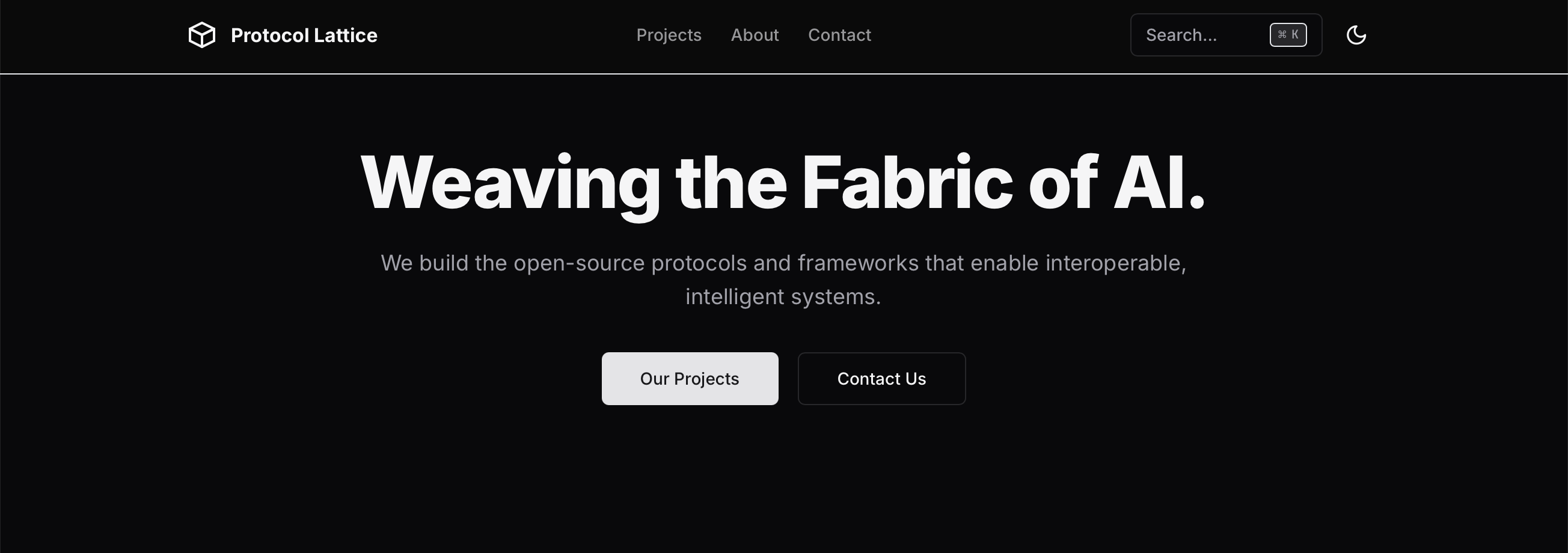
What is Protocol Lattice?
Protocol Lattice is a protocol-first, open-source toolkit for building interoperable AI agents. We ship practical frameworks for tools, memory, and orchestration so your agents can collaborate, persist knowledge, and plug into diverse provider stacks. Clean APIs, solid docs, and a community focused on real-world reliability — not hype.
Problem
Users face challenges in building interoperable AI agents due to lack of standardized protocols and fragmented tools/memory systems, leading to siloed workflows, inconsistent provider integrations, and inefficient knowledge persistence.
Solution
Protocol Lattice is an open-source toolkit enabling developers to build AI agents with interoperable frameworks for tools, memory, and orchestration. Users can create agents that collaborate, share persistent knowledge, and integrate with diverse AI providers (e.g., memory modules for context retention, toolchains for cross-agent workflows).
Customers
Developers, AI engineers, and tech leads at startups or enterprises working on AI-driven applications requiring scalable, provider-agnostic agent collaboration. Demographics: 25–45 years, technically proficient, focused on real-world reliability over hype.
Unique Features
Protocol-first design prioritizes interoperability over hype; modular tooling for memory persistence; community-driven reliability focus; open-source with clean APIs and thorough documentation.
User Comments
Praised for modular design
Solves agent collaboration pain points
Easy integration with multiple AI providers
Robust documentation
Community-driven roadmap
Traction
Newly launched (exact metrics unspecified; ProductHunt upvotes not public). Open-source repo has ~800 GitHub stars. Founder’s X (Twitter) followers: ~1.2K.
Market Size
The global AI agent platform market is projected to reach $12.3 billion by 2027 (CAGR 29.7%), driven by demand for automation and interoperable AI systems.

